Introduction
In a world where efficiency is paramount, organizations are increasingly challenged by the burdens of outdated manual processes that hinder productivity and escalate errors. From manufacturing to healthcare, these inefficiencies not only drain resources but also compromise service quality. As businesses navigate the complexities of modern operations, the transition towards automation emerges as a powerful solution.
This article delves into the multifaceted benefits of embracing automation, showcasing real-world success stories across various sectors. By exploring the steps of digitization, digitalization, and digital transformation, organizations can unlock streamlined processes that enhance operational efficiency and foster a culture of innovation. Discover how tailored automation solutions can empower businesses to thrive in an ever-evolving landscape, ultimately redefining their approach to operational success.
Challenges of Manual Processes
Organizations today confront substantial hurdles stemming from outdated manual processes that not only consume valuable time but are also rife with errors and inefficiencies. For example, in the manufacturing sector, a company grappling with inventory management relied heavily on spreadsheets and manual counts. This approach resulted in significant discrepancies, stockouts, and excess inventory, leading to delays in production and dissatisfaction among customers.
In the healthcare industry, a provider faced similar inefficiencies in managing patient data. The reliance on paper records often led to lost documentation and delays in patient care, undermining the quality of service.
To tackle these challenges, organizations are increasingly recognizing the importance of a structured approach to automation that encompasses three key steps: digitization, digitalization, and digital transformation. Digitization involves converting existing data into a digital format—this initial step ensures that data is accurately represented but does not involve analysis or modification. Following this, digitalization alters processes and organizational structures to enhance data capture and information dissemination, allowing for better decision-making.
Ultimately, digital transformation redefines how organizations utilize data and tools to create additional value for stakeholders. This multifaceted process places advanced systems at the center of operational execution, enabling staff to focus on high-value tasks rather than mundane manual processes.
As noted by a prominent authority in operations management, “the capacity to utilize tools effectively remains an issue,” emphasizing the necessity for clarity in business goals prior to starting automation efforts. Organizations must clearly identify the specific issues they aim to address—whether related to operating costs, service levels, or productivity—and establish guiding principles to select the right tools amidst an increasingly complex landscape.
To illustrate, a recent innovation in retail has emerged with the first checkout-free store in Ireland, powered by Zippin systems. This system allows customers to enter by scanning a payment card, with cameras and weight-sensor shelving detecting purchases, illustrating how technology can streamline processes and enhance customer experience.
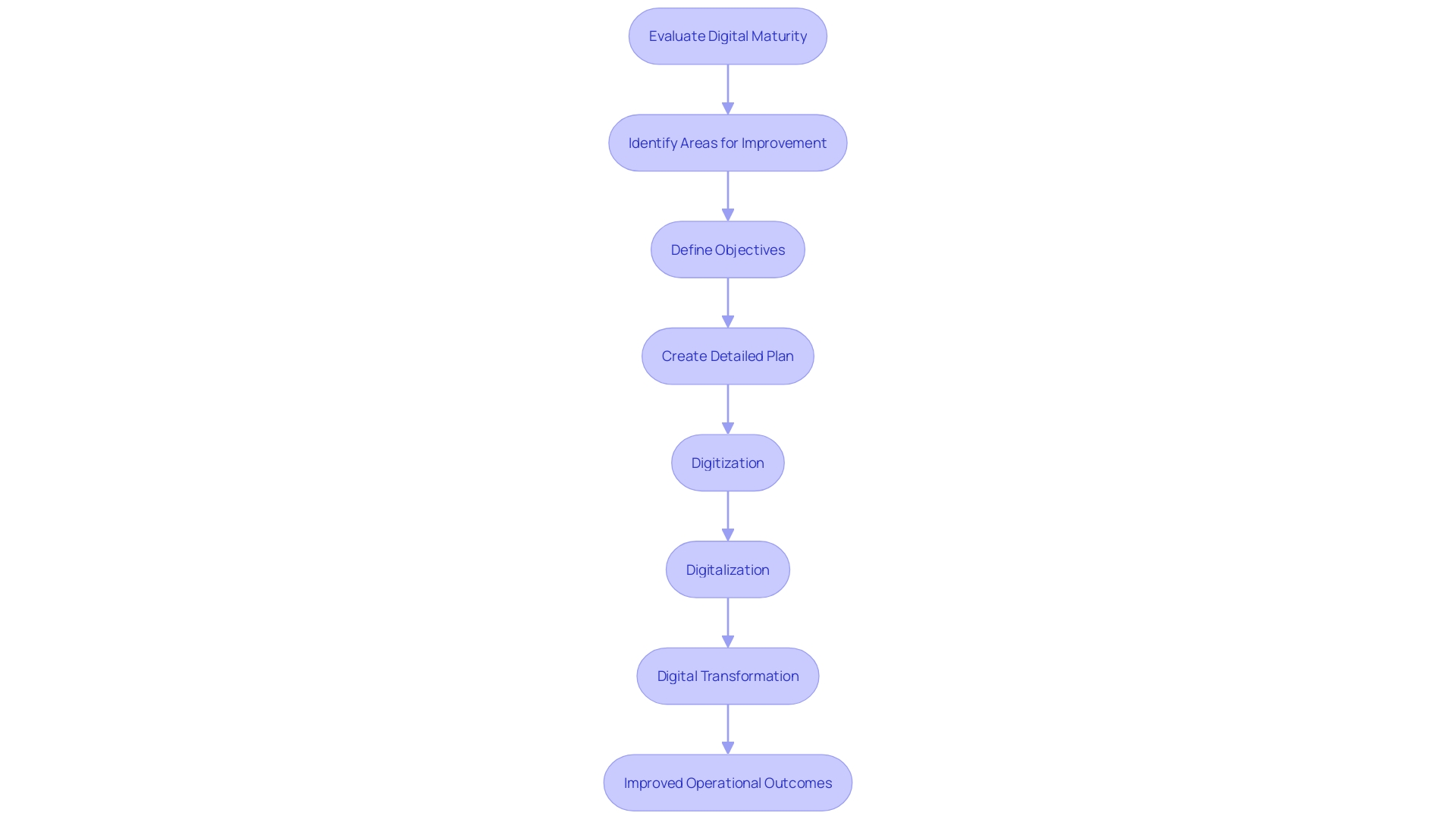
Solutions Through Automation
To address the urgent issues of operational effectiveness, companies from different industries have progressively relied on mechanization instruments tailored to fulfill their specific needs. For instance, in the manufacturing industry, a leading company implemented an advanced automated inventory management system that harnesses real-time data and analytics. This innovation not only streamlined stock tracking but also enabled accurate forecasting and enhanced order management, significantly reducing delays and excess inventory.
In the healthcare sector, the adoption of electronic health record (EHR) systems has transformed patient data management. By integrating information across departments, these systems ensure seamless access to patient records, which minimizes the risk of errors and improves patient care. Dr. McElvania, an advocate for lab mechanization, shared insights from his organization’s experience: “We have five fewer full-time employees than we did before we started, despite our volumes being nearly 50% greater.”. Automation is a huge part of our great culture, why people like to go to work. We are fully staffed, which is very unusual in this environment.” This emphasizes how mechanization not only enhances efficiency but also fosters a positive workplace culture.
Moreover, as organizations begin their journeys of mechanization, it is essential to define their particular business requirements. Comprehending the issues they seek to address, including operating expenses and productivity rates, establishes the foundation for efficient equipment selection. The complexities of contemporary systems necessitate a structured approach to evaluate available technologies and vendor options thoroughly. This guarantees that businesses can make informed choices that align with their performance objectives.
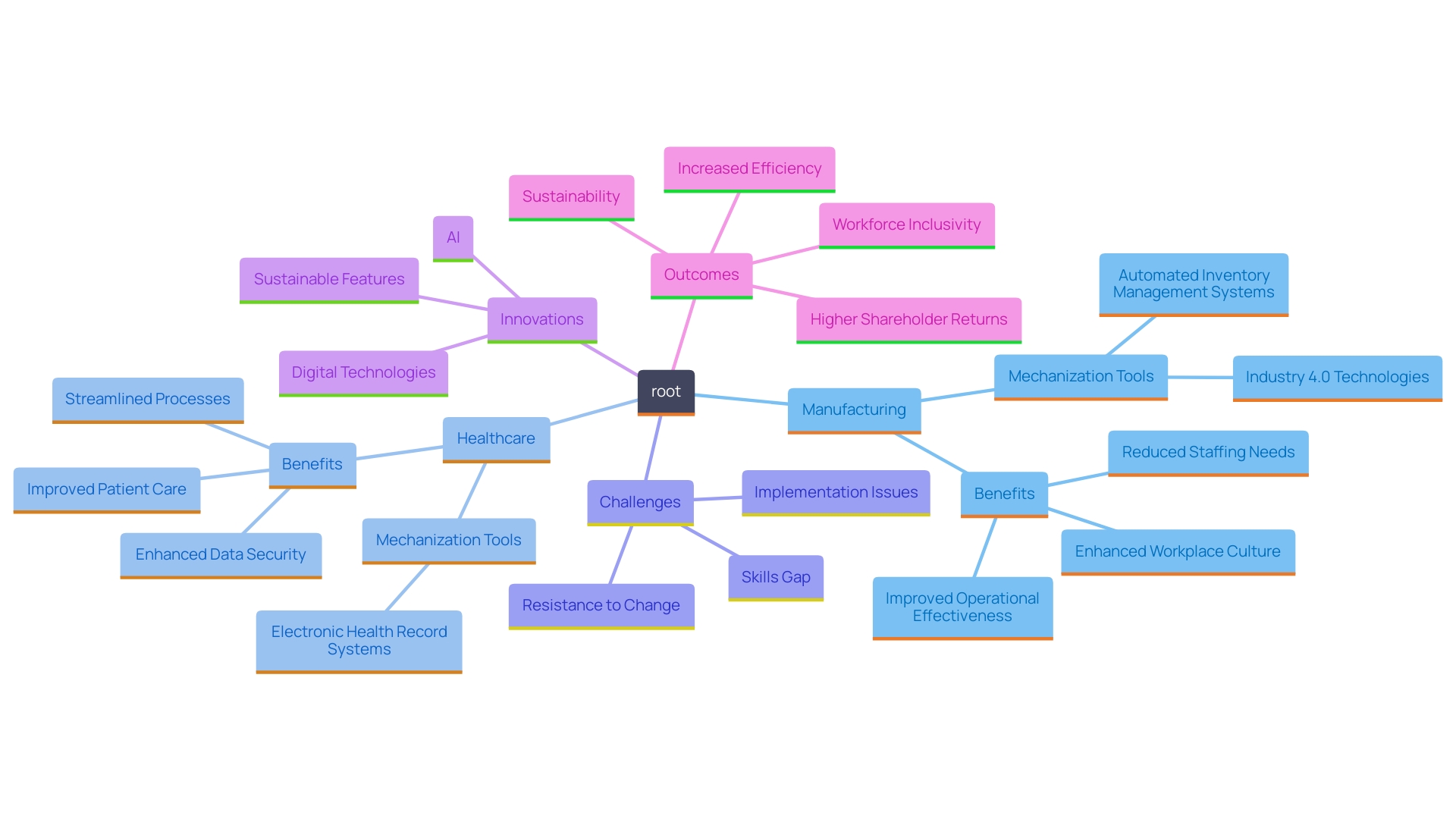
Case Studies: Success Stories in Various Industries
The success narrative of Europris, Norway’s top discount chain, demonstrates the transformative influence of mechanization in supply chain operations. In 2017, Europris partnered with Swisslog to create an automated central warehouse in Moss, with the goal of consolidating six warehouses into one efficient logistics center. This ambitious project unfolded over three phases and aimed to enhance operational efficiency significantly. The initial stage encompassed the building of a mechanized pallet storage facility featuring 65,000 pallet spaces and sophisticated Vectura pallet cranes, representing a crucial milestone in their mechanization journey.
In a similar vein, the financial services sector has also experienced remarkable advancements through mechanization. For instance, a prominent bank implemented an automated loan processing system, slashing the processing time from weeks to mere days. ‘This drastic reduction in time not only boosted operational efficiency but also significantly enhanced customer satisfaction, showcasing how mechanization can streamline operations and improve service delivery.’.
These examples emphasize the significance of precisely outlining business requirements prior to starting a technological transformation. Organizations must identify specific challenges—be it operating costs, service levels, or productivity issues—and understand the tradeoffs involved. By creating guiding principles for choosing tools, organizations can navigate the complexities of mechanization more effectively. This clarity is crucial, especially in an era where the digital transformation process involves digitization, digitalization, and ultimately, digital transformation itself. Each of these sequential steps plays a vital role in leveraging technology to create value and streamline operations, empowering businesses to stay competitive in a rapidly evolving marketplace.
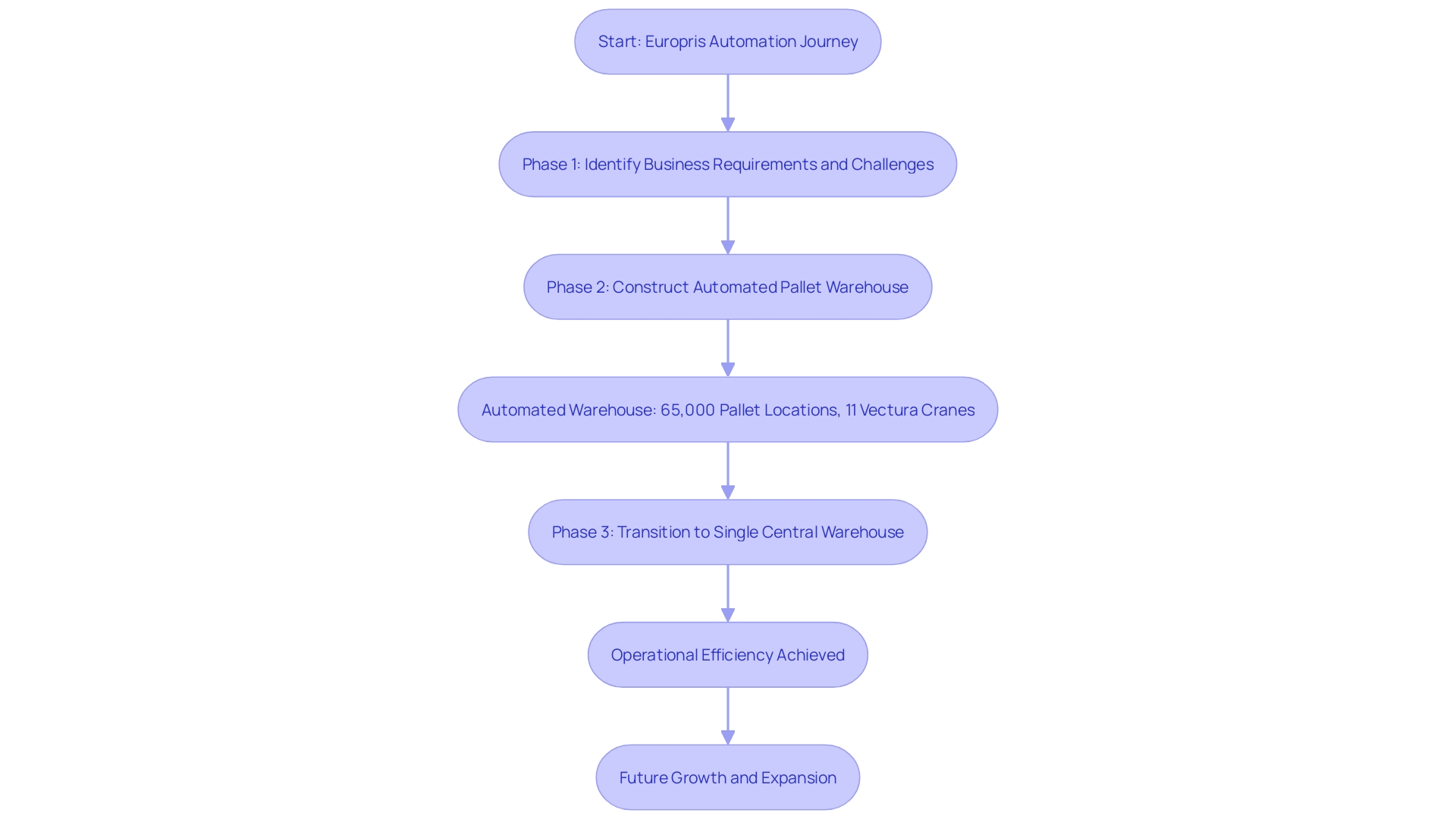
Benefits of Business Process Automation
Organizations that have adopted mechanization have observed significant advantages across different sectors. By improving operational effectiveness and speed, mechanization enables workers to shift their attention to strategic initiatives instead of being hindered by repetitive tasks. For instance, a manufacturing firm reported a remarkable 40% reduction in labor costs associated with inventory management, enabling them to allocate resources more effectively. Likewise, a healthcare provider observed a 25% rise in patient throughput, highlighting the revolutionary effect of mechanization on service delivery.
Along with increasing productivity, mechanization greatly improves data precision, resulting in fewer mistakes and better adherence across sectors. As Dr. McElvania highlighted, “Automation can help improve efficiency and help alleviate healthcare worker shortages. I was very fortunate to be with an organization that introduced laboratory mechanization in 2014 – we have five fewer full-time employees than we did before we started, despite our volumes being nearly 50% greater. Automation is a huge part of our great culture, why people like to go to work. We are fully staffed, which is a very unusual situation in this environment.”
‘The rise of mechanization is not merely a trend but a necessity, particularly when confronted with challenges such as growing demand and constrained resources.’. Statistics show that 94% of corporate executives favor using unified platforms for process management instead of handling various systems. This preference reflects a broader movement toward integrated solutions that streamline operations and enhance productivity. In this swiftly changing environment, organizations that utilize technological tools are better positioned to prosper and uphold their competitive advantage.
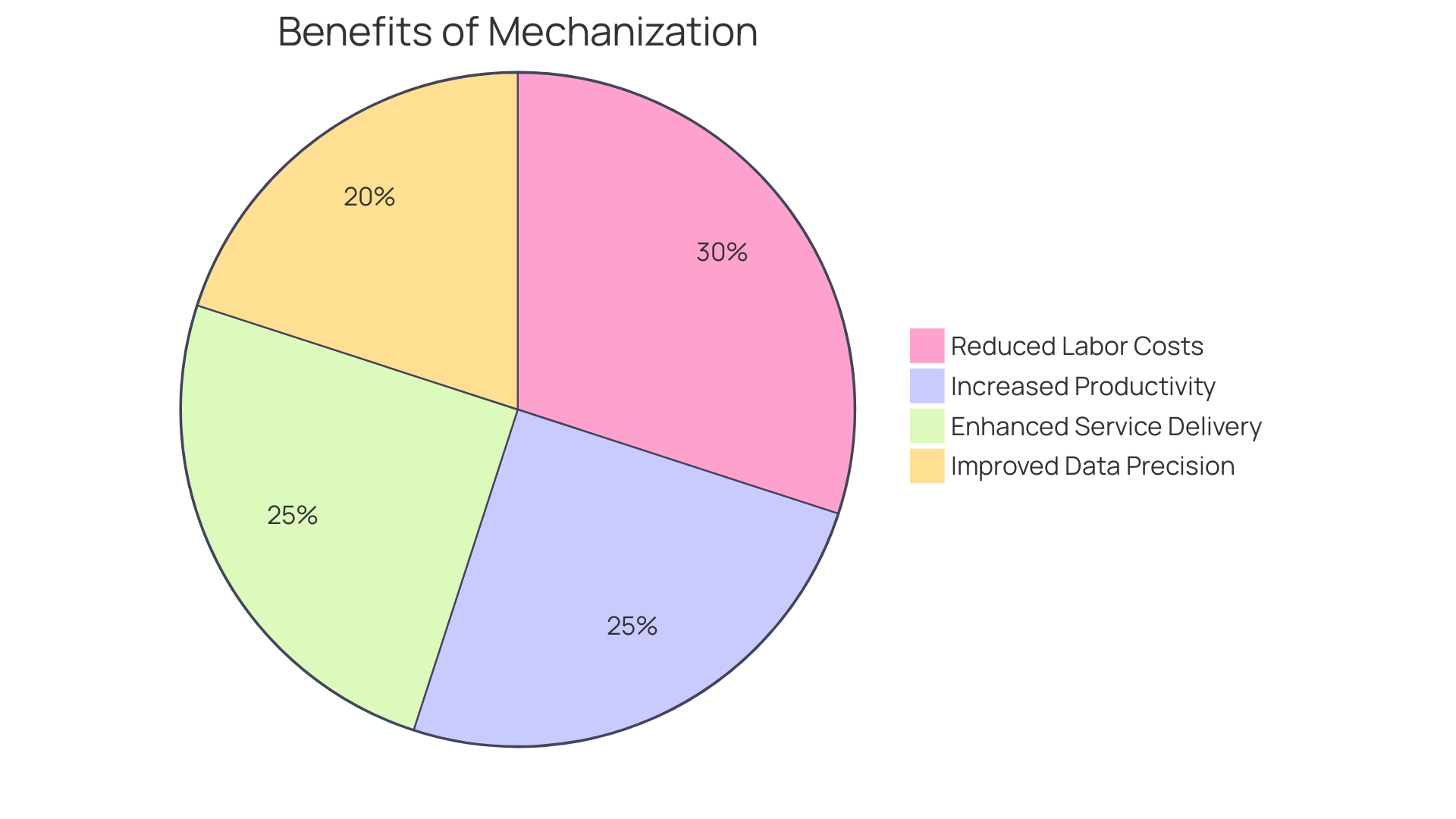
Real-World Examples of Automation
Automation has emerged as a transformative force across various industries, demonstrating its potential to enhance operational efficiency significantly. For instance, Europris, Norway’s leading discount chain, embarked on an ambitious process of mechanization with Swisslog to create a state-of-the-art central warehouse. This initiative aimed to consolidate six warehouses into a single, efficient logistics center. The first phase involved constructing an automated pallet warehouse featuring 65,000 pallet locations and 11 Vectura pallet cranes. This strategic move not only streamlined their operations but also positioned them for future growth in a competitive market.
In the logistics sector, the urgency for mechanization is underscored by the current global shortage of truck drivers, which is projected to worsen. The International Road Transport Union (IRU) states that there are more than 3 million vacant truck driver roles globally, a challenge encouraging companies to investigate mechanization solutions now more than ever. With the growing complexity of logistical operations, businesses are turning to innovative solutions such as autonomous mobile robots and artificial intelligence to optimize product flow and reduce labor dependency.
Moreover, in customer service, the use of chatbots has revolutionized how companies interact with clients. Telecommunications firms have deployed these AI-driven tools to handle thousands of inquiries simultaneously, resulting in improved response times and heightened customer satisfaction. This trend is not just limited to telecommunications; various sectors are leveraging chatbots to enhance service delivery.
These examples illustrate that mechanization is not just a trend but an essential factor for organizations seeking to flourish in today’s ever-changing environment. By clarifying their business needs and establishing guiding principles for technology selection, companies can effectively navigate their processes, ensuring they remain competitive and responsive to market demands.
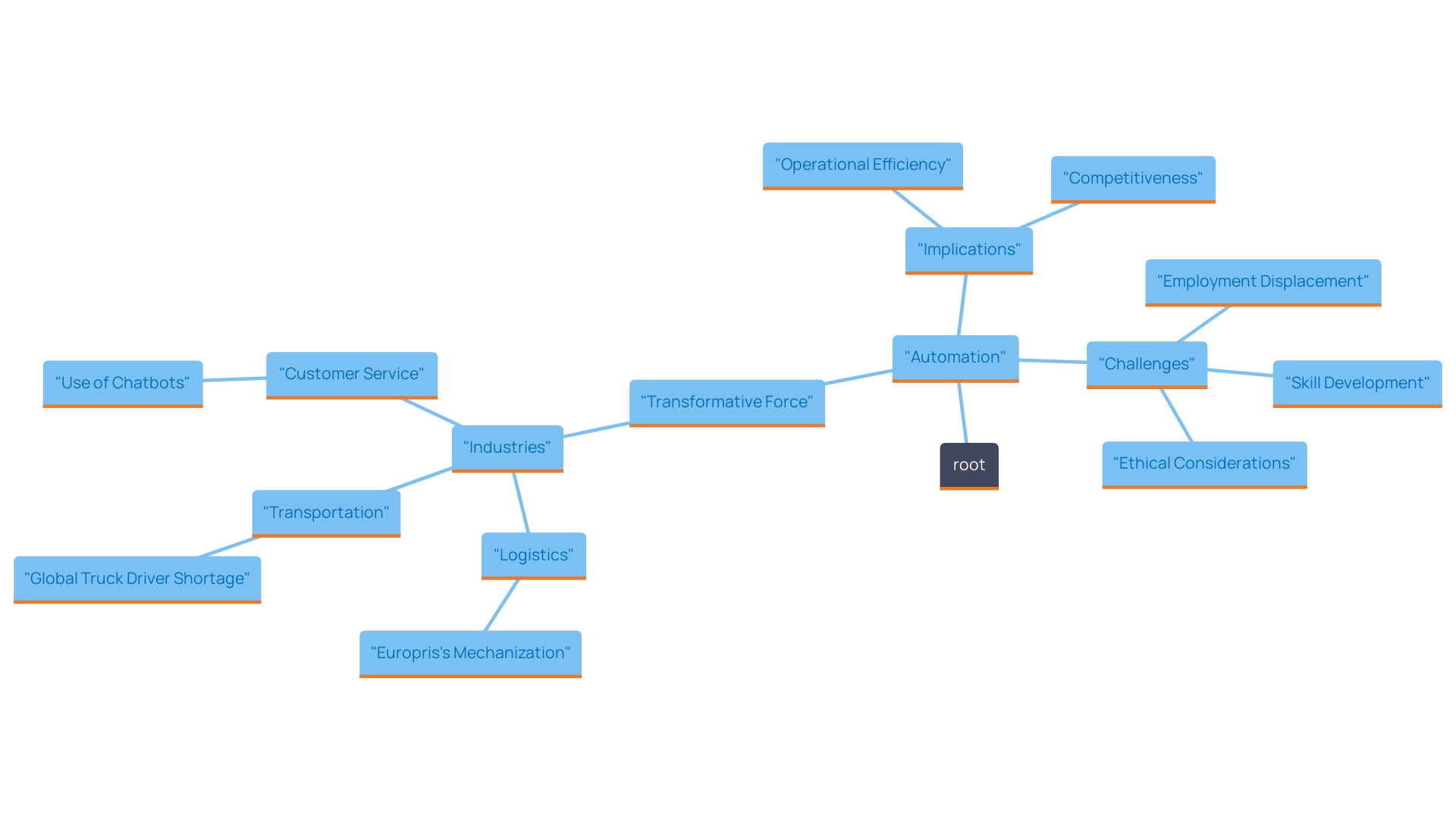
Industry-Specific Automation Solutions
Various sectors display unique mechanization requirements that influence their operational strategies. In manufacturing, the adoption of robotic arms on assembly lines has led to significant enhancements in production efficiency. For example, a recent report emphasized that U.S. industrial firms, utilizing advanced technologies such as AI and robotics, attained total shareholder returns roughly 400 basis points greater than in the prior 15 years, highlighting the financial advantages of mechanization.
In the healthcare sector, mechanization is transforming patient management through advanced scheduling systems and streamlined billing processes. These automated solutions not only reduce administrative burdens but also enhance patient experience by minimizing wait times and errors in billing. A survey indicated that organizations implementing automated dispensing systems in healthcare reported marked improvements in operational accuracy and efficiency.
The retail sector is also undergoing a transition towards mechanization, with systems for self-checkout and advanced inventory tracking becoming widespread. These technologies reduce labor costs and enhance customer satisfaction by providing a seamless shopping experience. Reports indicate that retailers utilizing automated systems have experienced enhanced inventory turnover rates and decreased occurrences of stockouts, further reinforcing the significance of customized mechanization in this sector.
Ultimately, customizing automation solutions to meet the specific demands of each industry is essential for maximizing their impact. As emphasized by industry leaders, the integration of tailored technologies fosters not only operational efficiency but also greater adaptability in the face of emerging challenges, such as supply chain disruptions and evolving consumer expectations.
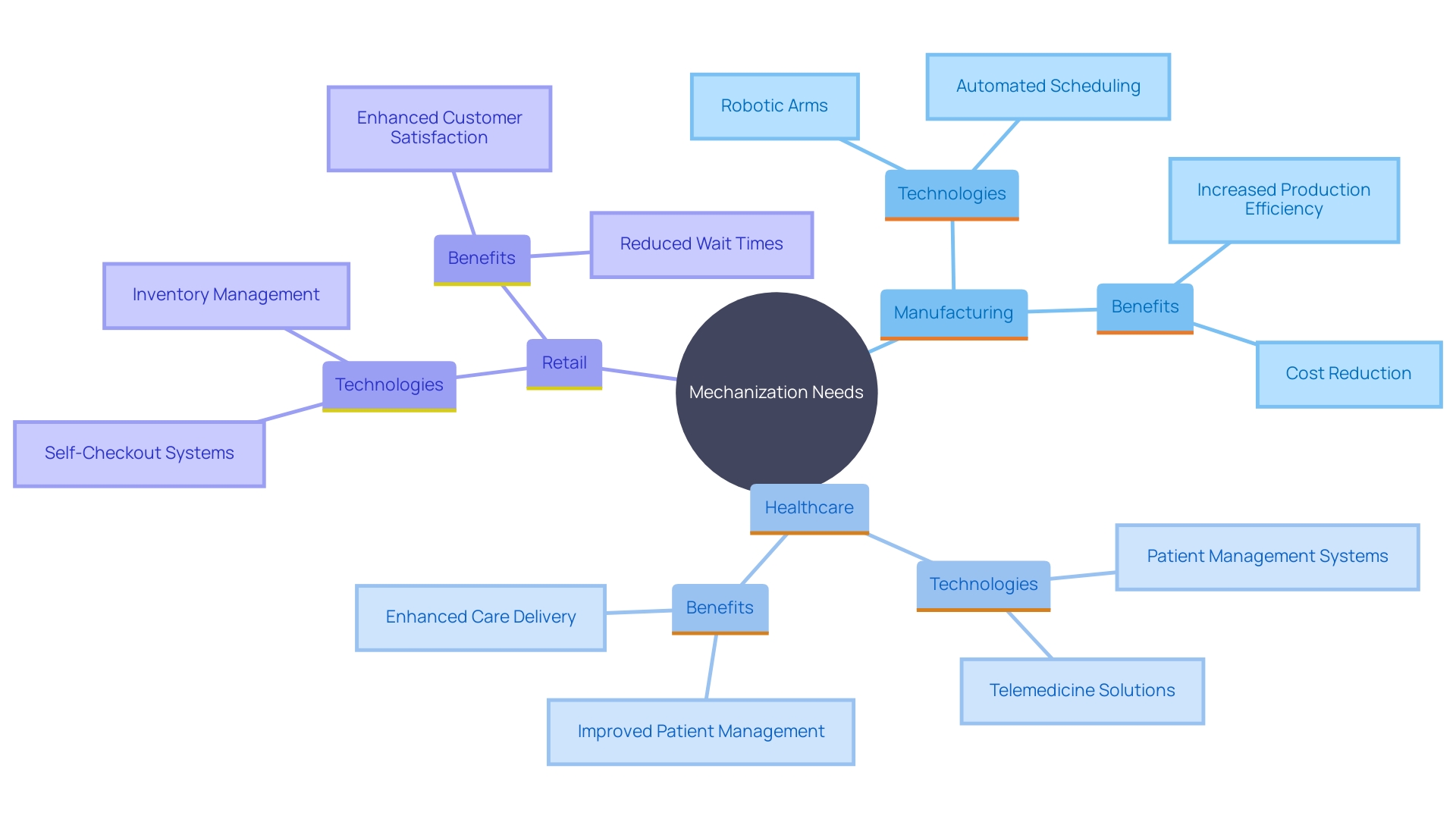
Conclusion
Embracing automation presents a transformative opportunity for organizations across various sectors, addressing the fundamental challenges posed by outdated manual processes. By recognizing the importance of digitization, digitalization, and digital transformation, businesses can effectively streamline their operations and enhance productivity. Success stories from sectors such as manufacturing, healthcare, and retail demonstrate that tailored automation solutions can significantly reduce errors, improve service delivery, and foster a culture of innovation.
The benefits of automation are clear: enhanced operational efficiency, improved data accuracy, and a notable reduction in labor costs. As organizations navigate the complexities of modern operations, it becomes crucial to clearly define their specific needs and challenges. This clarity not only guides the selection of appropriate technologies but also ensures that automation initiatives align with overarching business goals.
Ultimately, the journey toward automation is not just about adopting new technologies; it is about redefining how organizations operate to thrive in an ever-evolving landscape. By harnessing the power of automation, businesses can position themselves for sustained success, remaining competitive and responsive to the demands of the market.

